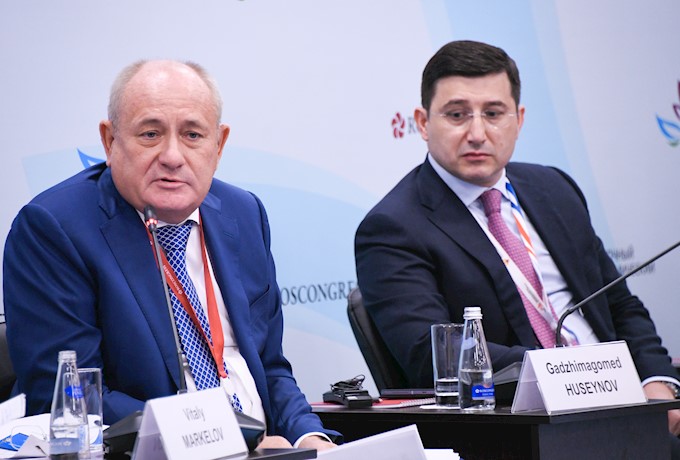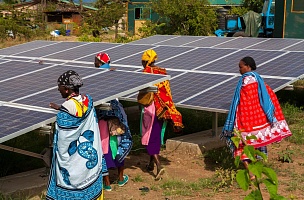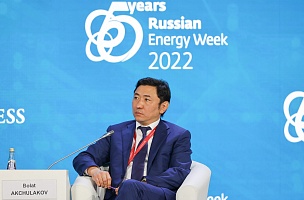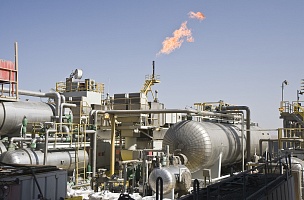CONCLUSIONS
There is a future for fuel gas from an environmental perspective
“There is a certain view that gas has good prospects as a fuel. Even despite the climate agenda, the potential for Russian export projects looks very promising at the moment,” Managing Director of VYGON Consulting Grigory Vygon.
“We recognize that we have a good window of opportunity over the next 20–25 years, when gas will be one of the key transitional fuels under the climate and environmental agenda. This concerns not only exports of gas or its use at thermal power stations, but also increased added value,” Deputy Minister of Energy of the Russian Federation Pavel Sorokin.
“The significant potential for gas utilization has been acknowledged, but I will offer just a couple of figures. The use of LNG as a motor fuel allows consumers to save around 30–45% in costs. Furthermore, using LNG reduces carbon dioxide emissions from fuel by 25%,” Deputy Chairman of the Management Board, NOVATEK Eduard Gudkov.
PROBLEMS
Low levels of gasification in the Far East and a lack of infrastructure to support the use of liquefied natural gas
“The level of gasification in Russia stands at 71%, but I would also like to note that, according to various estimates, the level of gasification in the Far East is between 19 and 24%. Five out of eleven regions in the Far East do not have pipeline gas. Coal generation accounts for 70% of the energy mix for heat generation in the Far East, and we are all aware of the issues arising from this,” First Deputy Minister of the Russian Federation for the Development of the Far East and the Arctic Gadzhimagomed Huseynov.
“The foundations for the development of gas supply and gasification in the Far East are now in place, with the creation of a backbone of main gas pipelines. Full-scale gasification in the Far East began in 2008, but a lot of work clearly remains to be done in order to accelerate gasification in the Far Eastern regions over the next ten years," Deputy Chairman of the Management Committee and Member of the Board of Directors of Gazprom Vitaly Markelov.
“We are looking at the issue with Gazprom and are already taking the first steps towards using LNG as well, but there is still the issue of infrastructure. Very expensive equipment, gas-handling facilities for the network, regasification and storage are all needed. We also need to change the boilers in the heating plants and create an entirely new infrastructure,” Deputy Chairman of the Government of the Amur Region Pyotr Pak.
There aren’t enough financing instruments for the development of high-cost projects
“I would like to draw attention to the new challenges now facing the industry in addition to the problems already encountered. What my colleagues have been discussing is the lack of affordable project financing. I am talking specifically about project-based financing, rather than lending to subsidiaries of major companies, which is always simpler. The lack of qualified personnel is another issue,” General Director of Himproekt Nikolay Sabitov.
“We need more projects and more investment in this area. Nevertheless, we are faced with the question of where the funding will come from, since we cannot endlessly burden the finances of existing companies with debt in order to develop these projects. On the other hand, all the projects are very capital-intensive and long-term,” Chief Managing Director of VEB.RF Andrey Zelenskiy.
SOLUTIONS
State support for business is needed when it comes to implementing large projects, including export-oriented projects
“We will be able to deal with our gasification objectives through the close interaction of federal and regional authorities at all levels and, of course, Gazprom,” Deputy Chairman of the Management Committee and Member of the Board of Directors of Gazprom Vitaly Markelov.
“The infrastructure costs required in order to deliver this gas – the wet gas, the components, all the valuable fractions, and then the finished product for export – are considerable. The state should therefore work alongside business to reduce costs as far as possible,” Deputy Minister of Energy of the Russian Federation Pavel Sorokin.
It should be acknowledged that the economic benefits of gas sector projects to all participants are achieved in part through mutual interaction
“It is vital that all marginal revenue generated from mining to processing is distributed fairly among participants throughout this value chain. If we can identify balanced solutions, then processing will be a priority for us,” First Deputy Minister of the Russian Federation for the Development of the Far East and the Arctic Gadzhimagomed Huseynov.
“It is also hugely important that we make use of all the reserves that are available to us in this country. We understand that Gazprom has major deposits that are being monetized as a priority. Eastern Siberia is home to a large number of reserves of independent gas producers… All of this must be accompanied by a fair tariff policy, and all activity must be economically sound for all participants in the chain,” Deputy Minister of Energy of the Russian Federation Pavel Sorokin.
“Distribution among the upstream supplier involved in extraction, the midstream partner who prepares gas for transportation and extracts the fractions that can be processed, and then the downstream partner who produces the end products – this economic distribution cannot be achieved entirely through regulatory means. It is built on the basis of mutual interest,” Chairman of the Management Board of SIBUR Holding Dmitry Konov.
For more information, visit the Roscongress Foundation's Information and Analytical System at roscongress.org.






